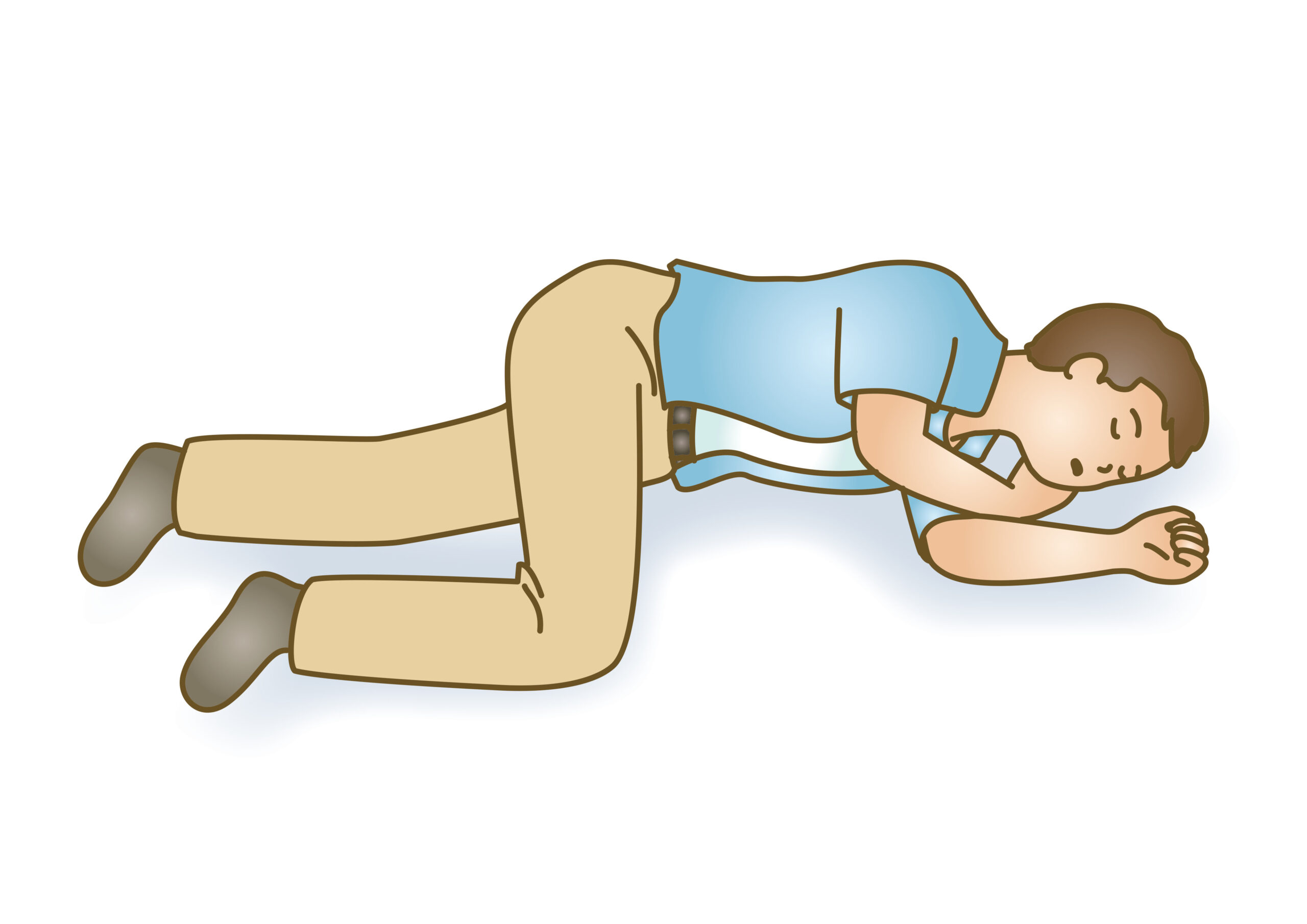Recovery Position
When an unresponsive patient has adequate circulation and regular breathing, the responder should place the patient in the recovery position, which helps to maintain a patent airway. The goal of this position is to prevent aspiration and airway obstruction.
The recovery position following the return of effective circulation and breathing, the rescuer should roll the patient onto the side, placing their head in a dependent position. This position will help to maintain a patent airway by decreasing pressure on the patient’s lungs and allowing emesis to flow out from the mouth.[/tooltip] involves placing the patient on their side with the lower arm in front of their body. The patient should remain in a stable, near-lateral position with their head in a dependent position and no pressure on the chest that would restrict breathing.
If a spinal injury is suspected, the rescuer should extend the patient’s lower arm above their head and bend both legs. Their head can then be rolled simultaneously with the rest of their body onto the extended arm.

Patient in the recovery position.
Key Takeaway
During the BLS assessment:
- If unsure whether a pulse is present, begin CPR.
- Agonal breathing is NOT effective breathing and is a sign of cardiac arrest.
- The use of an AED as soon as available improves the chance of survival.
- The correct BLS sequence is C-A-B: circulation, airway, breathing.
- Avoid interruptions in chest compressions except as required for rhythm analysis and defibrillation.
- Patients with in-hospital cardiac arrest have higher survival rates compared to out-of-hospital cardiac arrest.
- Performing compression-only CPR is better than no CPR at all.
- The compression to ventilation ratio for an adult is 30:2.